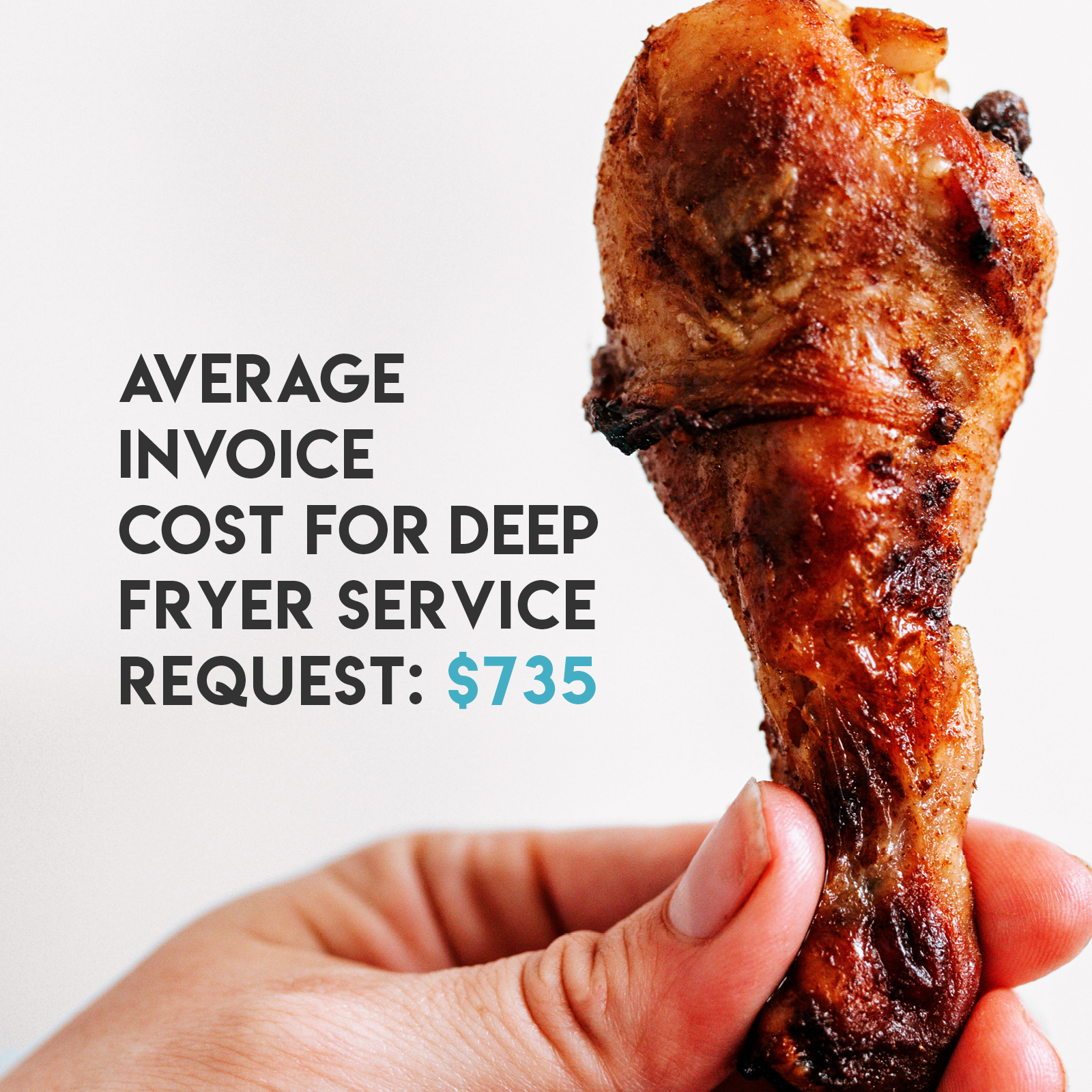Korean fried. Classic Buffalo. Hot Ones-level heat. The American appetite for wings knows no bounds. Wings have been as in-demand as toilet paper over the past two years: Mental Floss found that prices for the cut across the Northeast soared from their usual $1.50-1.70 in early 2021 to as much as $4 per pound in May of that year.
But wings really have their moment in the spotlight during the biggest sporting event of the year. The National Chicken Council projected that, during Super Bowl LVI, football fans would eat 1.42 billion flats and drums. (We have to wonder how many pounds of ranch and blue cheese were served on the side.) Though the retail price of wings has increased about $0.30 per pound compared to this time last year, consumer demand has remained steady.
So how can restaurants keep giving the people what they want? By keeping deep fryers in service.
86 Repairs data shows that the volume of fryer-related service requests increased 93% from March 2020 through December 2021, with the average invoice cost of a deep fryer repair and maintenance (R&M) request coming in at $735.
In food service, every day is game day. So keep your team ahead of any potential deep fryer issues with these tips from 86 Repairs CEO, Daniel Estrada.

Deep fryer repair starts with strong defense
Routine maintenance is a must to help deep fryers run smoothly during service. If your restaurant has a deep fryer (or several), your team should be following this cleaning procedure daily:
- Drain fryer oil at 120-130°F.
- Open the valve to flush debris out. Clear the drain before going in with a fryer cleaning rod, and then shut the valve when you’re finished.
- Spray cleaner inside the fryer; let it sit for several minutes. Then, use a metal scrubber or green scrubbing pad to clean.
- Rinse the cleaner off with water and wipe the fryer down until completely dry.
Alternatively, your team can conduct regular boil-outs every few weeks. However, all restaurants can benefit from regular preventative maintenance checkups to make sure any potential issues are spotted before they turn into full-blown deep fryer repair fumbles. Try to schedule it before any expected jumps in volume—like Super Bowl Sunday.
Be sure to follow manufacturer recommendations for all maintenance to avoid any potential issues with warranty coverage. Something as small as a misplaced filter can void a warranty—an expensive mistake to make, especially for new equipment.
Play a clean game to avoid deep fryer repair
Regular cleaning is table stakes in foodservice—after all, health inspections and the safety of your customers are on the line. But you can make cleaning less of a pain by making small tweaks to actual food prep.
Start by training your team to prepare food somewhere other than directly above the fryer. Salt, seasoning, and other debris can quickly build up in the oil, which then burns and breaks down, affecting oil quality and the overall flavor of your food.
Plus, the more debris collected in your fryer, the more likely it is to get stuck—and leave you stuck with a deep fryer repair and a $735 bill. If debris continues to collect in fryers, leave skimmers close by so your team can fish it out before it has a chance to burn.
Also, keep in mind your oil should be changed more frequently throughout service if you’re expecting higher order volume than normal.
For example, if your restaurant usually makes 30 pounds of wings on a Thursday night with no sporting events airing, you might want to prepare for 90 pounds or more to go through the fryer during large events. Using the same batch of oil for 3x the volume of food will lead to a decline in quality and an increase in dangerous debris. Yuck.

Deep fryer repair is less frequent if it's a well-oiled machine
With a deep fryer, the goal is to keep your oil as pure as possible. In addition to skimming debris and prepping food away from the top of the unit, your team should shake off ice crystals before frying frozen items and allowing oil to cool during off-peak hours.
Not serving many wings during lunchtime? Lower the temperature of the fryer to help maintain the lifespan of oil. Keeping it at cooking temperature for an entire day, or even an entire service, means you’re going to have to replace it that much more often.
Don’t forget to double-check the smoking point of the oils you’re using. When oil is past its smoking point, the fat will break down and your customers will be able to tell something is “off” with their food. Vegetable oil should stay between 400-450°F, peanut oil should hold at 450°F, and canola oil should be at 400°F.
Stay out of the deep fryer repair game
Last-minute deep fryer repair is inevitable. But smart preventative maintenance planning, enhanced cleaning strategies, and oil optimization can help make your maintenance no thing but a chicken wing so you can continue feeding and delighting customers.